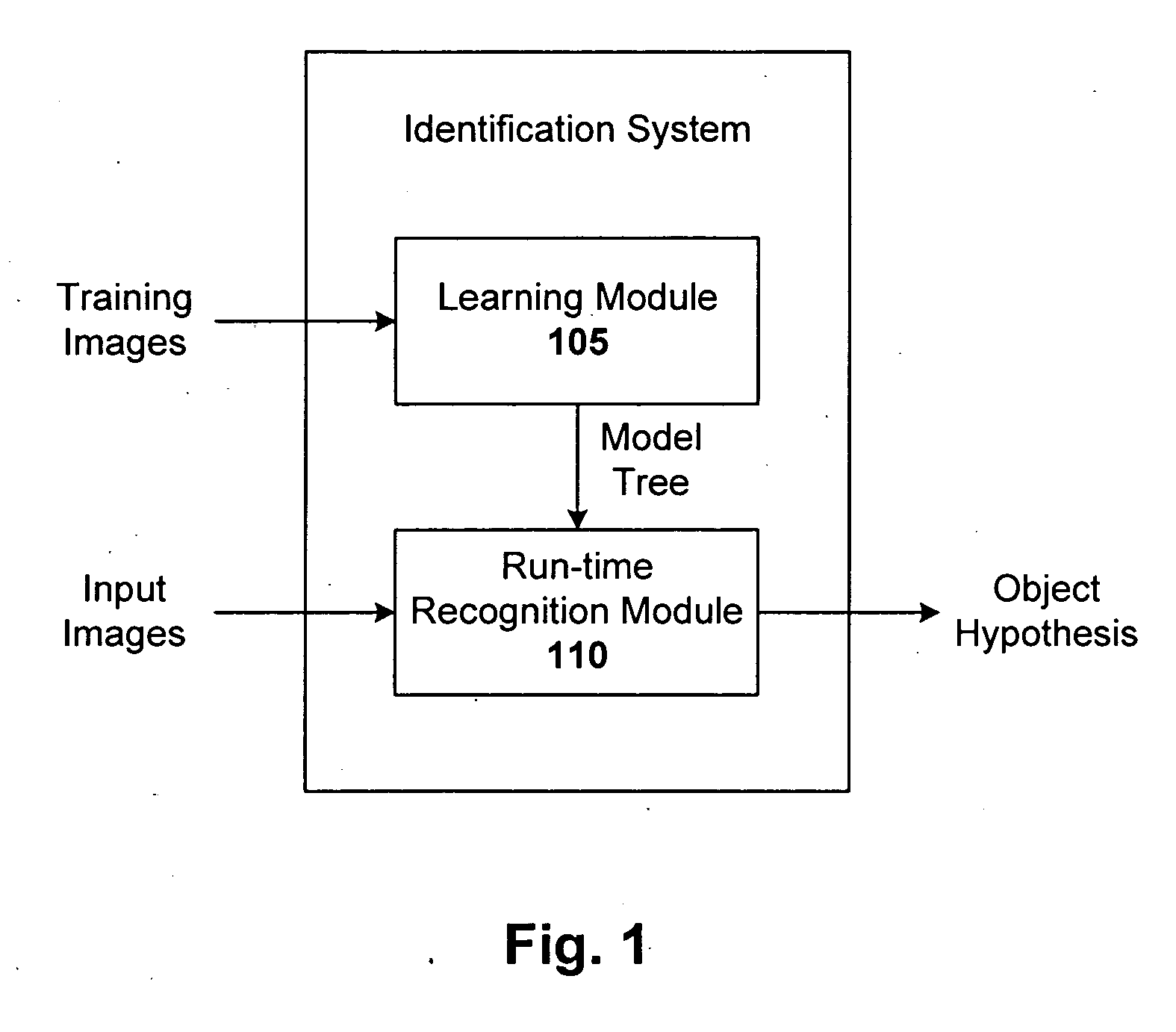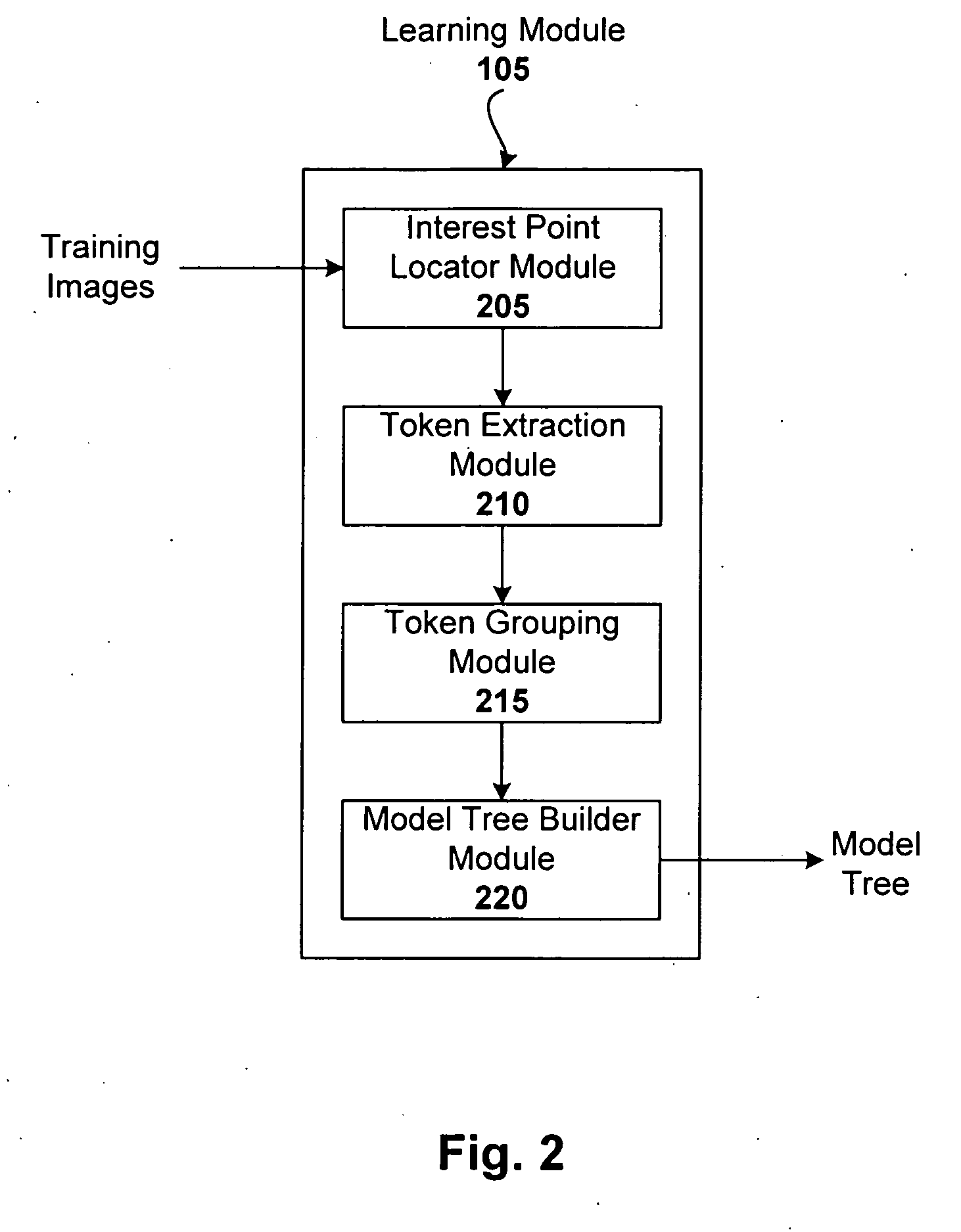Hierarchical system for object recognition in images
a hierarchy system and image technology, applied in the field of object recognition, can solve the problems of many conventional recognition systems suffering from a number of drawbacks, tedious construction, and the object in an image changes
- Summary
- Abstract
- Description
- Claims
- Application Information
AI Technical Summary
Benefits of technology
Problems solved by technology
Method used
Image
Examples
Embodiment Construction
[0017] Object recognition techniques are disclosed that provide both accuracy and speed. The techniques can be implemented without requiring a large database of training images, and enable real-time processing. Note, however, that embodiments of the present invention can also be used with a large database of training images, if so desired. Likewise, the present invention is not intended to be limited to applications that require real-time processing, and can readily be used in offline processing applications, as will be apparent.
[0018] General Overview
[0019] One embodiment of the present invention is an identification system. The system is capable of locating objects in images by searching for local features of an object. The system can operate in real-time (images are rapidly processed to achieve object hypotheses as the images are presented to the system), and can be used in applications such as autonomous driving, visual inspection for quality control, surveillance, autonomous ...
PUM
 Login to View More
Login to View More Abstract
Description
Claims
Application Information
 Login to View More
Login to View More - R&D
- Intellectual Property
- Life Sciences
- Materials
- Tech Scout
- Unparalleled Data Quality
- Higher Quality Content
- 60% Fewer Hallucinations
Browse by: Latest US Patents, China's latest patents, Technical Efficacy Thesaurus, Application Domain, Technology Topic, Popular Technical Reports.
© 2025 PatSnap. All rights reserved.Legal|Privacy policy|Modern Slavery Act Transparency Statement|Sitemap|About US| Contact US: help@patsnap.com



